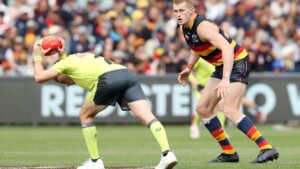Future Metals strikes sulphide mineralisation at Panton – and it’s only the ‘weakest’ part

Picture: Getty Images
Future Metals has confirmed the potential for its Panton PGM-nickel project to host larger sulphide accumulations at depth that have not been previously tested.
Visual inspection of initial drilling had indicated that the shallow holes in the ‘Lower Zone’ of the Panton Intrusion have intersected magmatic disseminated sulphides, which demonstrates the presence of another mineralised system in addition to existing chromite and silicate-hosted reef.
It follows gravity modelling identifying a prospective basal contact and feeder position under chromite reefs, and a larger anomaly in the south, coincident with electromagnetic conductors.
Additionally, magnetic inversion modelling has strongly supported Future Metals’ (ASX:FME) ‘Keel Zone’ hypothesis and provided large targets coincident with known anomalous nickel, copper and sulphur.
“The exploration model validated through the recent drilling and geophysical modelling is an exciting development for the company,” managing director Jardee Kininmonth said.
“The gravity inversions clearly show a significant keel position underlying the entire Panton intrusion and provide multiple basal contact and potential feeder targets to be drilled.”
He added that the identification of magmatically emplaced disseminated sulphides for the first time at Panton is encouraging as it provides significant evidence of a nickel-copper-PGE sulphide system encasing and underlying the existing reef-style mineralisation that makes up the current resource.
Panton currently has a resource of 6.9Moz palladium equivalent.
“The drilling of these sulphides are at the edge of the system where analogues would suggest mineralisation is at its weakest and it is considered likely that mineralisation will increase towards the keel position, which is yet to be tested,” Kininmonth noted.
Deeper drilling
Testing of this keel position will be the goal of an upcoming deep drill hole which will be co-funded by the Western Australia Government’s Exploration Incentive Scheme grant of up to $220,000.
This hole will be drilled directly into the untested bottom of the basal contact and/or feeder position.
Future Metals is also systematically testing the magnetic anomalies along the Lower Zone in the north, drilling a central hole through each anomaly to test for sulphide mineralisation, changes in geology, and to allow for follow up down-hole electromagnetic surveying.
Once these targets are tested, the rig will move to the south to test EM conductors and the shallower areas of the gravity anomalies.
This article was developed in collaboration with Future Metals, a Stockhead advertiser at the time of publishing.
This article does not constitute financial product advice. You should consider obtaining independent advice before making any financial decisions.
Related Topics
UNLOCK INSIGHTS
Discover the untold stories of emerging ASX stocks.
Daily news and expert analysis, it's free to subscribe.
By proceeding, you confirm you understand that we handle personal information in accordance with our Privacy Policy.








